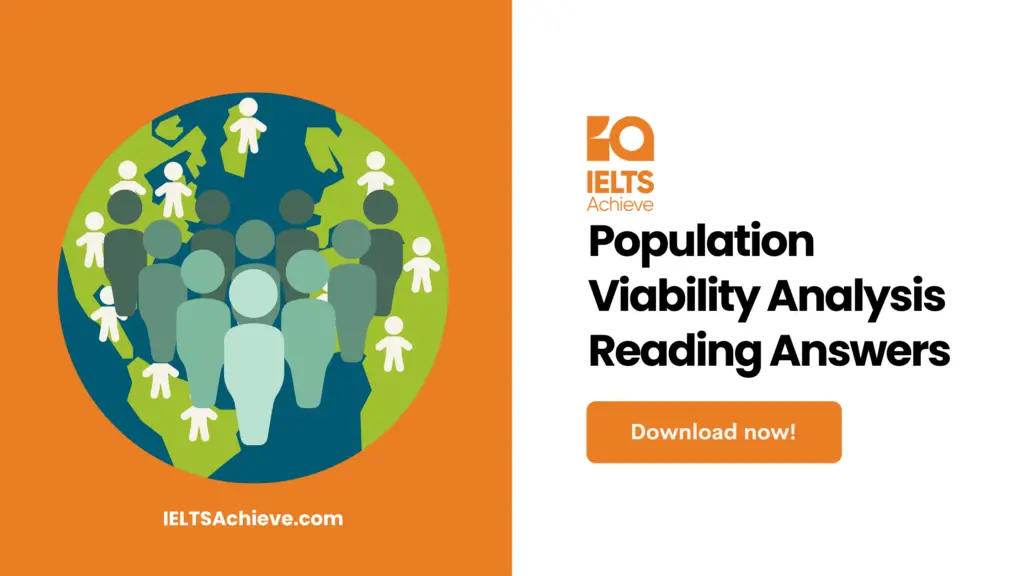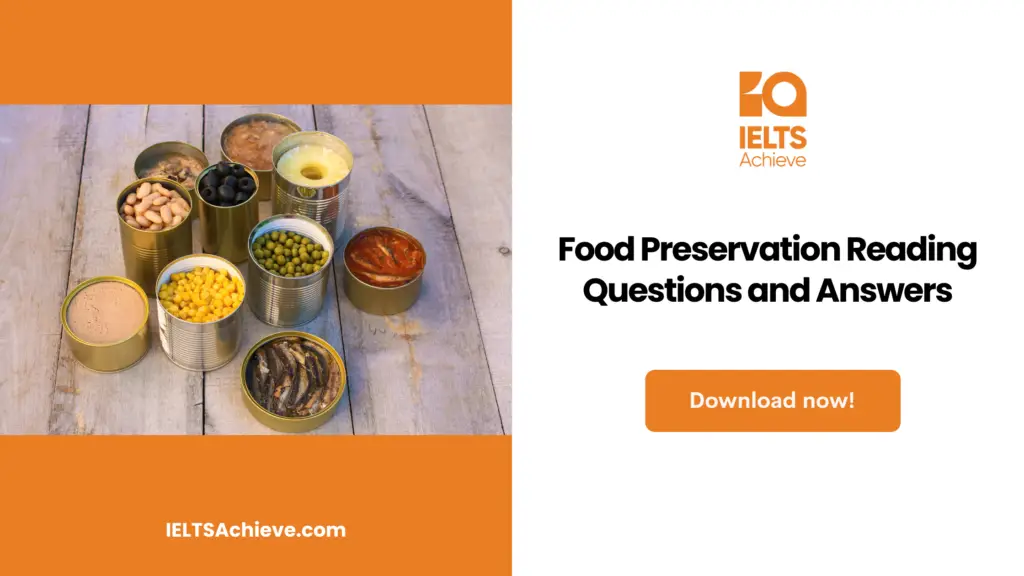The Blog post contains the following IELTS Reading Questions:
IELTS Reading Yes/No/Not given Questions
IELTS Reading Sentence Completion Questions
IELTS Reading Multiple Choice Questions
You should spend about 20 minutes on Questions 1-12 which are based on Reading Passage 1 below:

Part A
To make political decisions about the size and kind of forest in a region, it is essential to comprehend the implications of those decisions. Population viability analysis (PVA) is a tool for estimating the effect of forests on the ecosystem. It is a tool that predicts the possibility of extinction of a species in a certain area over a period of time. It has been used successfully in the United States to provide input on resource exploitation decisions and to help wildlife managers. There is now a huge possibility for using population viability to aid wildlife management in Australia’s forests.
A species vanishes when the last person dies. This observation is a helpful starting point for any talk of destruction, as it highlights the part of luck and chance in the process of destruction. To make a prediction about destruction, we need to comprehend the methods that contribute to it, these are the four wide types discussed below.
Part B
Early attempts to assume population viability was based on population uncertainty whether a person will survive from one year to the next is frequently a prospect. Some couples can produce multiple pups in the same year, while others will not produce anything in the same year. Small populations will fluctuate greatly due to the inconsistency of birth and death, and these likely fluctuations will, on average, cause species extinction even as the population size increases. Considering only this uncertainty of reproductive ability, extinction is not possible if the number of people in a population is over 50 and the population is expanding.
A small amount of breeding cannot be avoided by small populations. This is especially true if you have a very little number of genders. For illustration, if there are only 20 persons in a race and only one man, then all future persons in that species must be descended from that one man. For most animal species, such individuals are probably not able to survive and reproduce. Increases the chance of breeding extinction.
Variation in a species is the raw material from which natural choice operates. Without genetic variation, a species does not have the ability to grow and adapt to changes in its environment or to new predators and new illnesses. Loss of genetic variation associated with population decline may contribute to the possibility of extinction.
A recent study shows that other aspects need to be considered. Australia’s environment is highly volatile from year to year. These changes add another degree of uncertainty to the survival of many organisms. Disasters such as fire, flood, drought, or epidemics can reduce the population to a small part of their average level. When these two additional uncertainties are paid for, the population needed to sustain a few hundred years can increase by thousands.
Part C
Apart from these processes, we need to keep in mind the population distribution. A species that happens in five isolated areas do not have the possibility of extinction of a race of 100 persons in the same place with 20 persons each.
Where trees are cut down, forest-dwelling creatures are forced to flee. Ground-dwelling plants can return within a decade. Nevertheless, arboreal marsupials (i.e., tree-dwelling animals) have not been able to regain pre-recorded density for more than a century. As more forests are destroyed, the number of animals will further decrease. Regardless of the theory or model we prefer, reducing the size of the population reduces the genetic variation of the population and raises the probability of extinction due to any or all of the methods listed above. So it is a scientific truth that expanding the loaded area in any region will boost the chances of extinction of forest-dependent animals.
Population viability analysis IELTS reading questions
Questions 1-4
Do the following statements agree with the views of the writer in Part A of Reading Passage 1?
In boxes 1-4 on your answer sheet write:
- YES if the statement agrees with the writer
- NO if the statement contradicts the writer
- NOT GIVEN if it is impossible to say what the writer thinks about this
Example: A link exists between the consequences of decisions and the decision-making process itself.
Answer: YES.
- Scientists are interested in the effect of forestry on native animals.
- PVA has been used in Australia for many years.
- A species is said to be extinct when only one individual exists.
- Extinction is a naturally occurring phenomenon.
Questions 5-8
These questions are based on Part B of Reading Passage 1.
In paragraphs A to D the author describes four processes which may contribute to the extinction of a species.
Match the list of processes (i-vi) to the paragraphs.
Write the appropriate number (i-vi) in boxes 5-8 on your answer sheet.
NB. There are more processes than paragraphs so you will not use all of them.
Paragraphs
5. Paragraph A
6. Paragraph B
7. Paragraph C
8. Paragraph D
Processes
i Loss of ability to adapt
ii Natural disasters
iii An imbalance of the sexes
iv Human disasters Evolution
vi The haphazard nature of reproduction
Questions 9-11
Based on your reading of Part C, complete the sentences below.
Use NO MORE THAN THREE WORDS for each answer.
Write your answers in boxes 9-11 on your answer sheet.
While the population of a species may be on the increase, there is always a chance that small isolated groups (9)……………….. Survival of a species depends on a balance between the size of a population and its (10)………………. The likelihood that animals which live in forests will become extinct is increased when (11)…………………
Question 12
Choose the appropriate letter A-D and write it in box 12 on your answer sheet.
12. An alternative heading for the passage could be:
A. The protection of native flora and fauna
B. Influential factors in assessing survival probability
C. An economic rationale for the logging of forests
D. Preventive measures for the extinction of a species
Population viability analysis IELTS Reading Answers
| 1. YES | 5. vi | 9. will/may not survive//will/may/could become extinct |
| 2. NO | 6. iii | 10. locality//distribution |
| 3. NO | 7. i | 11. logging takes place/occurs |
| 4. NOT GIVEN | 8. ii | 12. B |
Population viability analysis IELTS reading answers with explanations
- Yes: The passage states population viability analysis (PVA), a tool for predicting a species’ extinction probability, has been used successfully in the US, matching the statement.
- No: The passage suggests there’s potential for using PVA in Australia, implying it hasn’t been used yet, contradicting the statement.
- No: The passage states species extinction happens when the last individual dies, contradicting the statement.
- Not Given: The passage doesn’t mention whether extinction is a naturally occurring phenomenon.
- VI: The passage mentions the randomness of birth and death can lead to species extinction, matching the answer VI (The haphazard nature of reproduction).
- III: The passage discusses how small populations could lead to an imbalance of the sexes, matching answer III.
- I: The passage suggests species without genetic variability can’t adapt to environmental changes, matching answer I (Loss of ability to adapt).
- II: The passage mentions environmental fluctuations and natural disasters can reduce population sizes, matching answer II (Natural disasters).
- Will/May not survive, or will/may/could become extinct: A species in five isolated places each with 20 individuals might not survive, suggesting extinction probability.
- Locality, distribution: These are highlighted as factors affecting the extinction probability of a species.
- Logging takes place/ logging occurs: The passage suggests where logging occurs, animal populations are forced to leave, reducing their sizes.
- B: The passage discusses factors including demographic uncertainty, inbreeding, loss of genetic diversity, natural disasters, distribution, and logging, which influence survival probability. Hence, the answer is B (Influential factors in assessing survival probability).
Download Population Viability Analysis IELTS Reading Question with Answer

